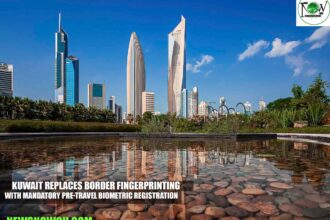China Introduces Digital Arrival Card and Broadens Visa-Free Transit Access
Starting in November 2025, China will introduce a digital arrival card for all foreign travelers and broaden its visa-free transit options. This innovative step allows visitors to submit their entry information online, enhancing their travel experience at airports and ports. With these changes, China continues its journey toward modernizing travel for international visitors.
How the Digital Arrival Card Works
From November 20, 2025, all foreign travelers, regardless of their visa status, can fill out their entry details online prior to their trip. There are several ways to apply for the Digital Arrival Card:
- National Immigration Administration (NIA) Website
- NIA 12367 App
- Mini Programs on WeChat and Alipay
If you forget to complete the form before your flight, don’t worry! After landing, you can finish it by scanning a QR code or using a self-service kiosk at the airport. For a limited time, the traditional paper forms will still be available at airports to assist travelers during this transition.
By adopting this digital arrival card, China aligns itself with other Asian nations like India, Indonesia, and South Korea, which have already embraced digital solutions for entry.
Who Is Exempt from the Digital Form?
The NIA specifies that seven categories of travelers do not need to complete the new digital arrival card:
- Foreigners with a Chinese Permanent Resident ID
- Hong Kong and Macao residents possessing a Mainland Travel Permit
- Group travelers entering on a collective visa or as part of a visa-free group
- Transit passengers who remain in the airport
- Cruise passengers departing on the same vessel
- Travelers using dedicated fast-track lanes
- Foreign crew members of international transport vehicles
New Visa and Transit Changes
The introduction of the digital card is part of China’s broader strategy, featuring ten new measures designed to streamline travel and bolster its commitment to global openness. Many of these measures aim to enhance visa and entry processes.
Expanded 24-Hour Visa-Free Transit
Beginning November 5, 2025, China will extend its 24-hour visa-free transit policy to ten additional international airports, including:
- Tianjin
- Dalian
- Nanjing
- Fuzhou
- Qingdao
- Wuhan
- Nanning
- Haikou
- Chongqing
- Kunming
Travelers en route to a third country can transfer at these airports without undergoing immigration checks, provided they remain in the terminal.
240-Hour Visa-Free Transit Expands to More Ports
China will also add five new ports in Guangdong Province to its 240-hour (10-day) visa-free transit program, raising the total to 65 ports across 24 provinces. Travelers from 55 countries can now enter through designated ports and stay for up to 10 days for tourism, business, or family visits. The new ports include:
- Guangzhou Pazhou Ferry Terminal
- Hengqin Port
- Hong Kong Zhuhai Macao Bridge Port
- Zhongshan Passenger Port
- West Kowloon Station Port of the Guangzhou Shenzhen Hong Kong high-speed rail
Simplified Family Visit Visa Renewals
In a significant update, mainland residents visiting Hong Kong or Macao for family reasons can now renew their travel permits directly at China Travel Service offices in those regions, eliminating the need to return to the mainland.
Conclusion
These initiatives reflect China’s ongoing commitment to simplifying entry for foreign visitors and business travelers. The digital arrival card and expanded visa-free options promise a smoother travel experience, aligning China with international travel standards. Ultimately, entering China is set to become quicker, more efficient, and more accessible for international travelers.
READ MORE
- Canada Temporary Foreign Workers Program 2026
- 9 EU Countries with the Most Affordable Work Visa Options for 2026
- Thailand Extends Manual Work Permit Applications Through January 2026
- Netherlands Introduces New Visa Rule: Applicants Must Submit Colour Copies
- Saudi Arabia Updates Health Insurance Regulations for Temporary Work Visa Holders
- New Zealand Introduces Visa-Free Access for Pacific Island Travellers Transiting Through Australia









